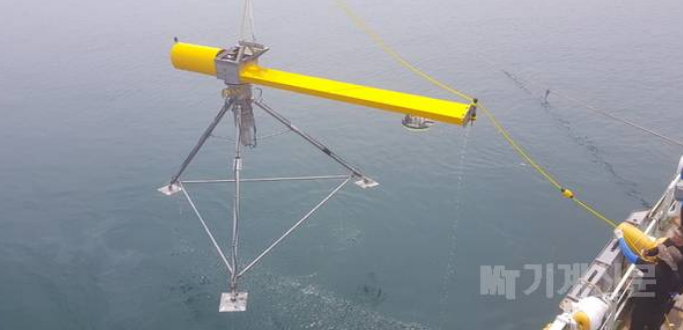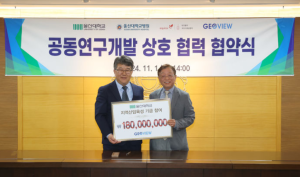By Oh Sang-mi, Machine News, February 20, 2020, 14:59
The newly developed Acoustic 3D scanner has significantly improved exploration precision compared to existing imported equipment, and can quickly explore only the target seabed area while viewing the seabed in three dimensions, reducing existing exploration time by up to 50%.
This development was carried out for three years from 2016 with the support of the Ministry of Oceans and Fisheries and the Korea Institute of Marine Science and Technology Promotion (KIMST) as part of the “Future Marine Industry Technology Development Project” that supports the development of practical technologies in the marine field.
During the research and development period, we received assistance from a group of domestic and international experts in the fields of design, stability analysis, production, and test operation, and conducted three field tests to verify the technology.
In particular, tests conducted in the West Sea with the support of the National Research Institute of Maritime Cultural Heritage demonstrated the exploration performance of the developed equipment by accurately measuring the size and burial depth of an ancient ship sunk underwater.
The accuracy of exploration information from the previously used towed exploration method was greatly affected by the maritime environment and ship movements.
However, the newly developed equipment acquires ground information by sinking to the seabed, which greatly improves the signal-to-noise ratio and raises the precision to the highest level by improving the existing horizontal resolution to within 10 cm.
In addition, since it quickly explores only the target area, it can reduce exploration time by more than 50% compared to existing geological exploration methods, and it has become possible to obtain high-quality 3D image data compared to 2D interpretation that converts interpretation results by overlapping data.
The newly developed exploration equipment weighs less than 1 ton, which is suitable for the domestic situation where there is a shortage of coastal exploration vessels. It is expected to contribute to securing high-quality seabed ground data required for future excavation of underwater cultural assets, development of marine underground resources, establishment of offshore wind farms, and construction of marine plants.
In addition, it is expected that the import substitution effect and technology service exports in the field of submarine geological exploration will expand through the original technology of the Acoustic 3D scanner, which was developed using purely domestic technology and presents a new exploration paradigm called the submarine landing type.
Kim Hyun-do, CEO of Geoview, said, “We signed a joint venture agreement with Innomar, a German high-frequency geological exploration company, and an MOA for equipment sales and technical services with Dolphin Geo Subsea of Singapore,” adding, “We have laid the foundation for entering the global market from Korea, a wasteland for marine exploration equipment.”
Reporter Oh Sang-mi osm@mtnews.net



